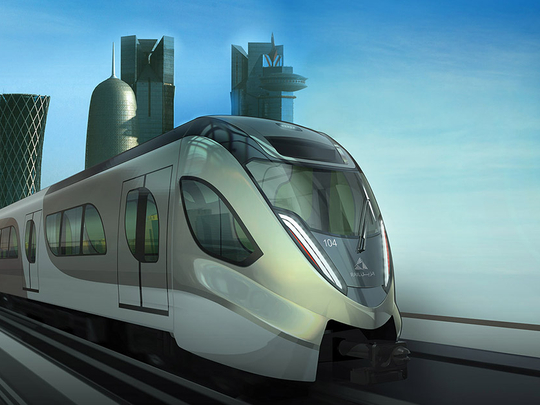
Doha: Qatar, in general, and Doha, in particular, gives the appearance of a giant construction site. Add to it several ludicrously-named roundabouts that are being converted into traffic signals, traffic redirections and dug-up roads and you get a fair image of a city-state under massive overhaul.
Among these large-scale projects the ones to get most (unwelcome) global attention are the under-construction stadiums for the 2022 Fifa World Cup. But ask local residents about the development that gives them the biggest headaches and the answer is likely to be Qatar Rail or the Doha metro.
However, Andy Taylor, who is the chief of service delivery at Qatar Rail, tends to think otherwise. “When I first came to this city last June I, thought wow, this is the greatest gift this city can get — a good metro. Take out the traffic, encourage people to get out and walk and get on public transport.”
In an exclusive interview with Gulf News, Taylor admitted that it might not be as straightforward: “When people are really wedded to their cars, it is hard to get them out. But if we do it well enough, we will have people who currently don’t even think about public transport come to rely on the metro as their preferred way of getting to work, social occasions or various other events would use their car for now.”
In an ideal scenario, this may seem like the perfect solution to the miserable Doha traffic but bring in factors such as lack of pedestrian walkways and bridges; more than half a year of relentlessly hot weather or the difficulty in reaching one of the 37 planned metro stations and the situation changes.
Flooding
When Qatar received an unexpected spell of rain over the past couple of months, roads were flooded with water and the inconsistently laid out pedestrian paths gave way, adding to the misery of those who weren’t inside four-wheel-drive vehicles.
Taylor believes Qatar Rail has been “very wise by focusing not only on the construction of the rail network but also looking at inter-connectivity and joined up solutions”, which, he explained “serve people who don’t just want a good metro journey, they want a good journey from their home to their final destination.” In essence, he said, it may mean good information on where to go, or a good bus network or even good pavements.
Pricing for the metro system is also expected to go a long way in determining its long-term success, especially with the lower-to-middle income groups but it isn’t the sole selling point for the team behind the metro.
“We aim to not only compete on low price but on speed of journey and even more than that on reliability of journey because if you have a long trip from suburbs to somewhere in the city, you can have short journey sometimes but more often than not it will be an unpredictable journey.”
In recent weeks, Qatar Rail has been busy announcing completion of several milestones such as the completion of tunnelling of the green line, which will be one of the three lines to become operational when the metro opens for public in 2019. This means that 87 per cent of the tunnelling work for the entire first phase has been completed and construction progress for the green line’s station has surpassed the 50 per cent barrier.
Oil crisis
These announcements, along with the revelation of the Doha metro train’s exterior, have also served as gentle reminders that while national rail body has been hit by the recent oil crisis, it remains on course to be completed by the promised dates. January saw the sacking of 50 Qatar Rail employees and while the general mood in the region regarding such large-scale projects has been gloomy, the organisation has dismissed rumours of launch delays.
According to Taylor, the government has provided “tremendous support and priority to Qatar Rail and its projects” but the organisation “has been given the opportunity, like everybody else in this low oil crisis immunity, to think a bit more carefully about what we do.”
While it may not be solely designed for the World Cup, there is little doubt about the importance of the metro and the Lusail Light Rail Transit system in the grand scheme of the tournament.
“It will provide a pivotal role,” Taylor agreed. “We work very closely with the Supreme Committee for Delivery and Legacy (the body responsible for delivering the World Cup) to make sure we are ready and we want to understand their needs and their thinking as well.”
Spectators at the 2022 event are promised free transport on the Qatar Rail network during the tournament and organisers say they are mindful of the expectations.
“We want to make sure that we can provide the integrated solutions which can cope with this big event. This won’t be the only big event that we will cater for but we are building in capacity for the long term.”
— Hafsa Adil is a Doha-based freelancer.












